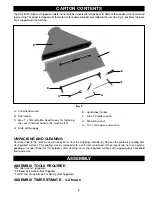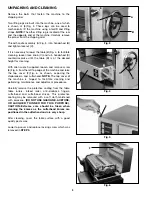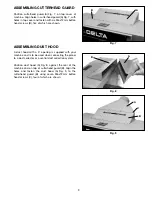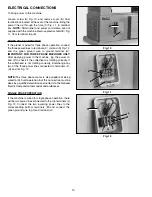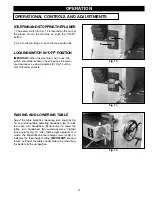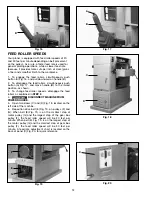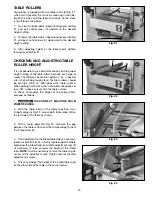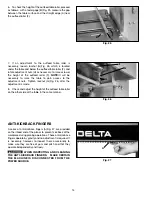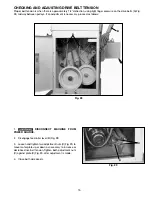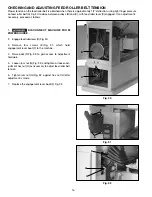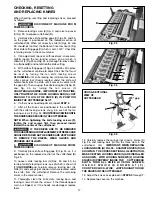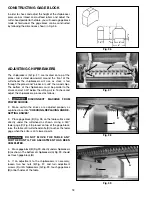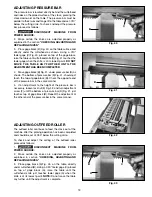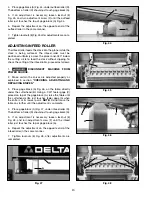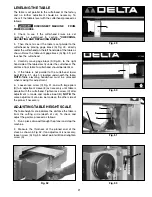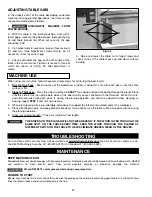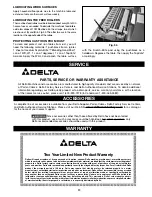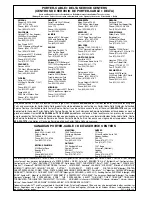
21
Fig. 49
Fig. 50
Fig. 51
Fig. 53
Fig. 52
LEVELING THE TABLE
The table is set parallel to the cutterhead at the factory
and no further adjustment should be necessary. To
check if the table is level with the cutterhead, proceed as
follows:
1.
DISCONNECT MACHINE FROM
POWER SOURCE
.
2.
Check to see if the cutterhead knives are set
correctly as explained in section
“CHECKING,
ADJUSTING AND REPLACING KNIVES.”
3.
Then check to see if the table is set parallel to the
cutterhead by placing gage block (A) Fig. 49, directly
under the cutterhead on the left hand side of the table as
shown. Raise the table until gage block (A) Fig. 49, just
touches the cutterhead.
4.
Carefully move gage block (A) Fig.50, to the right
hand side of the table directly under the cutterhead. The
distance from table to cutterhead should be identical.
5.
If the table is not parallel to the cutterhead, lower
boot (B) Fig. 51, which is located underneath the table.
NOTE:
Table elevating handwheel must be unlocked
when making this adjustment.
6.
Loosen lock screw (C) Fig. 51, and with large pliers
(D) turn adjustment sleeve (E) as necessary until table is
paralell with the cutterhead. Tighten lock screw (C) after
adjustment is made and replace boot (B).
NOTE:
The
same adjustment can also be made on the other side of
the planer if necessary.
ADJUSTING TABLE HEIGHT SCALE
The table height scale indicates the distance the table is
from the cutting circle (depth of cut). To check and
adjust the pointer, proceed as follows:
1.
Run a piece of wood through the planer and stop the
machine.
2.
Measure the thickness of the planed end of the
stock as shown in Fig. 52. If an adjustment is necessary,
loosen screw (A) Fig. 53, adjust pointer (B) and retighten
screw (A).
A
A
C
E
B
D
B
A

